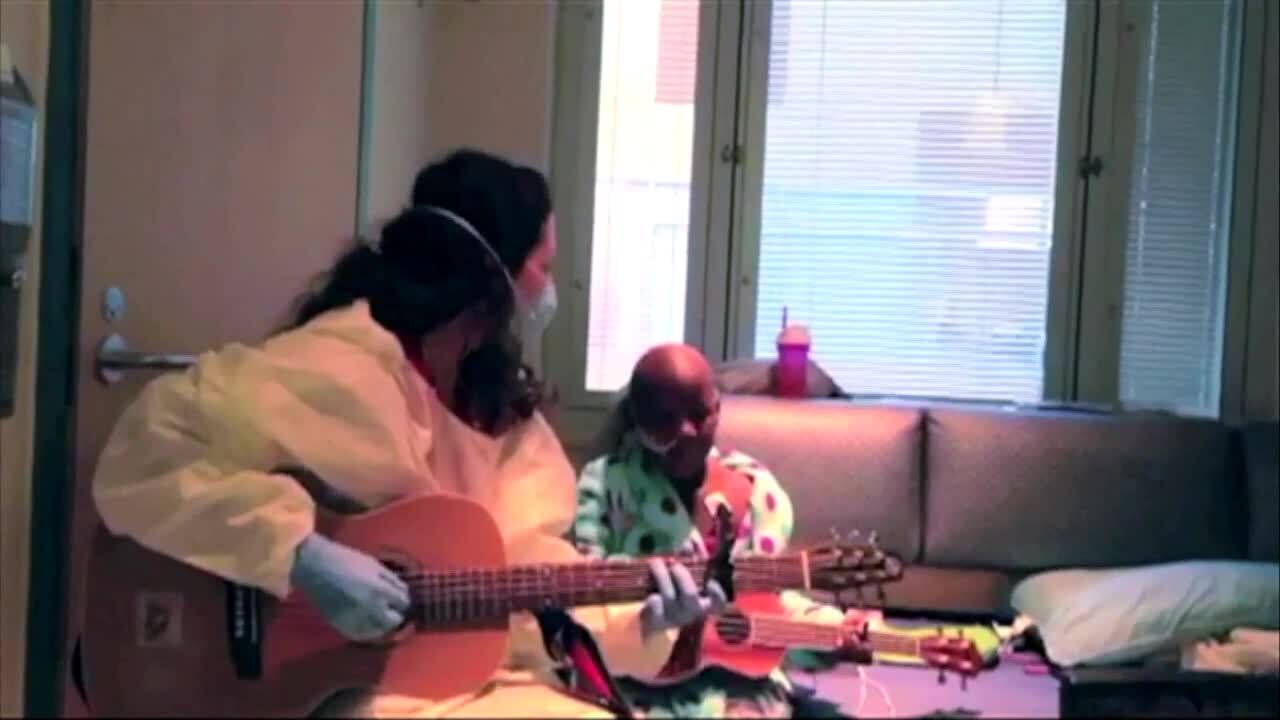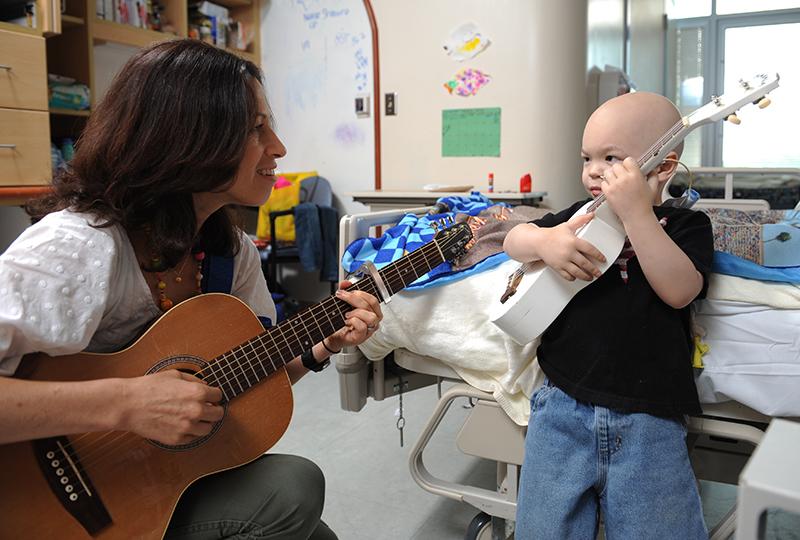How songs and instruments help with medical care.
Imagine you are 4 years old (or 8 or 12 or 16, for that matter) and you have to come to the hospital. You have to leave your regular routine to go to a place that is perhaps scary or lonely and you aren’t exactly sure what is going on. You might be feeling emotionally anxious and fearful or physically in pain or discomfort. Now imagine that you are that child’s parent, knowing that you will do just about anything to help them cope well and feel better. For parents in this situation, one option is to schedule music therapy for their child.
Music therapists at Monroe Carell Jr. Children’s Hospital at Vanderbilt are board-certified and trained to create a treatment plan personalized for each patient. Here are some reasons for using music therapy and examples of how it works:
Pain management/relaxation: The music therapist sits at the bedside of a 4-year-old boy while she strums her guitar to the rhythm of his breathing. She helps him to visualize what his abdominal pain might looks like to help guide him in imagining that this pain is getting smaller. The strum of the guitar slows the rhythm of his breath until he is able to relax enough to fall asleep.
Emotional expression: A 17-year-old girl relies heavily on her faith to get her through a difficult diagnosis. The music therapist encourages her to write her favorite passages from the scripture and helps set these lyrics to music, creating a song entitled, “Keeps Me Going,” which eventually serves as a legacy by which her family can remember her.
Normalization/socialization: A group of young children sits around a table choosing and playing a variety of instruments. The music therapist names each child in the opening “Hello Song,” and invites each one to choose and sing their favorite song. The children are a part of a music group like they might encounter in school. Familiar songs such as “Wheels on the Bus” and “Ants Go Marching” bring children and music together in a fun, normal social environment.
Distraction: A drum and a xylophone go a long way to distract a child. Using musical improvisation and/or exploration can help a child focus on the sound he is creating rather than a procedure that is going on or will happen soon. The child can play a simple melody on the xylophone as the music therapist sings a familiar song while he is getting stitches. Or the music therapist can engage the child in a non-verbal drum “conversation” alternating back and forth in response to the other’s drum beat. Before the child knows it, time has passed and it was not spent worrying.
Music therapy helps children cope with all aspects of their hospitalization. Music is a common experience that most children and families have shared, which makes it familiar and welcome in the healing process.
Check out this short video of a music therapy session:


